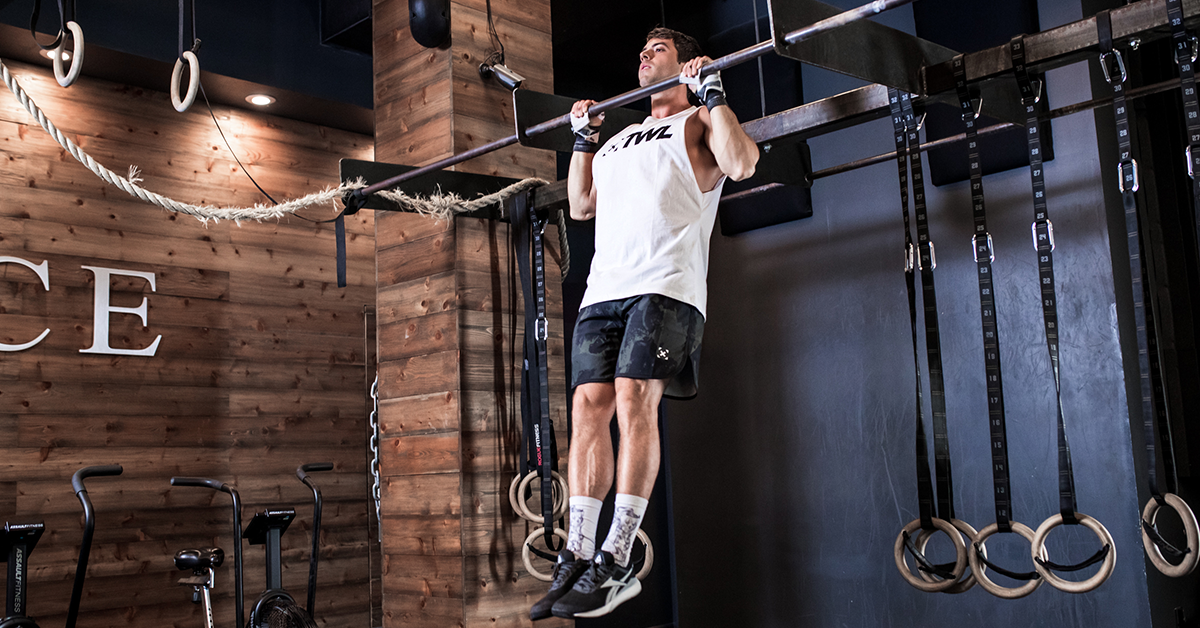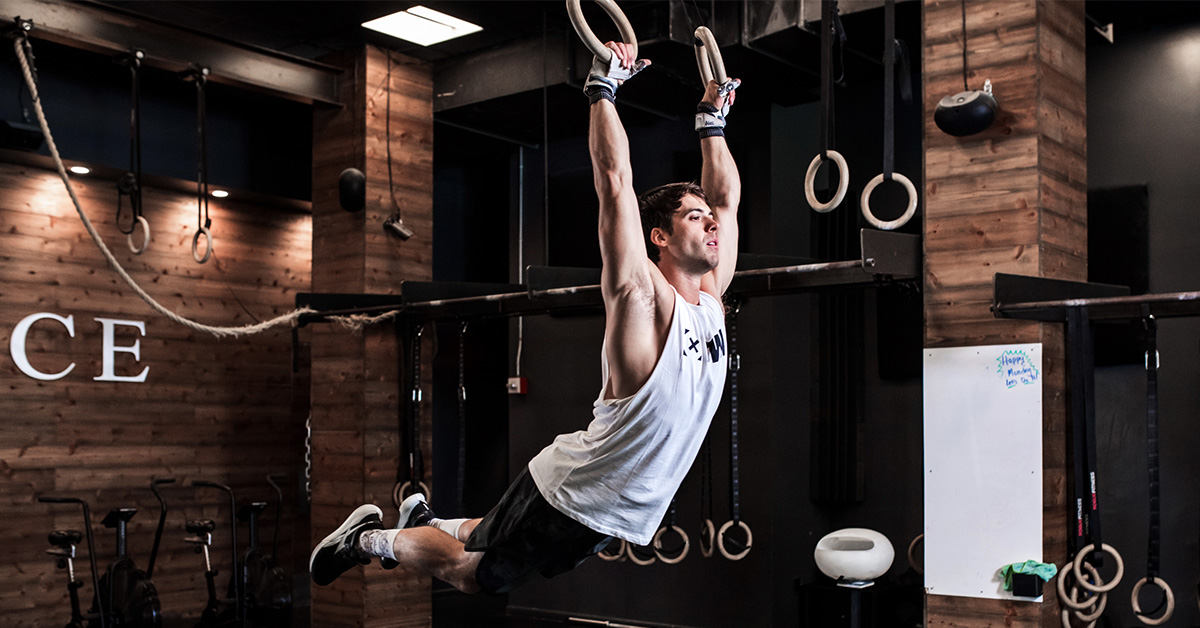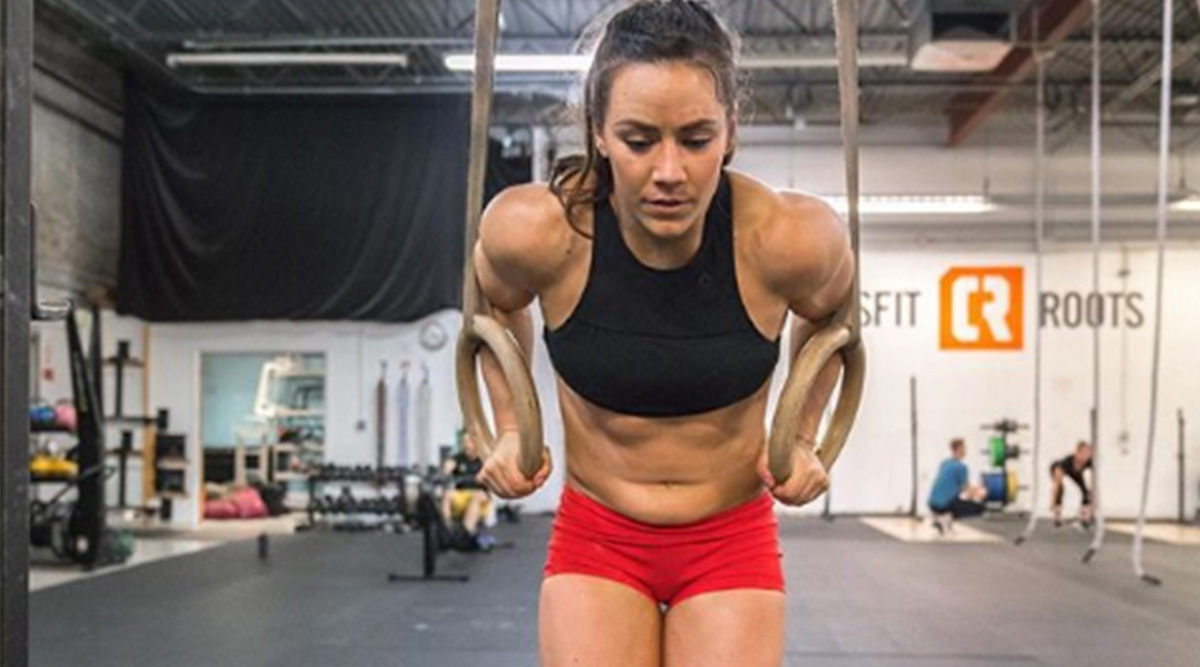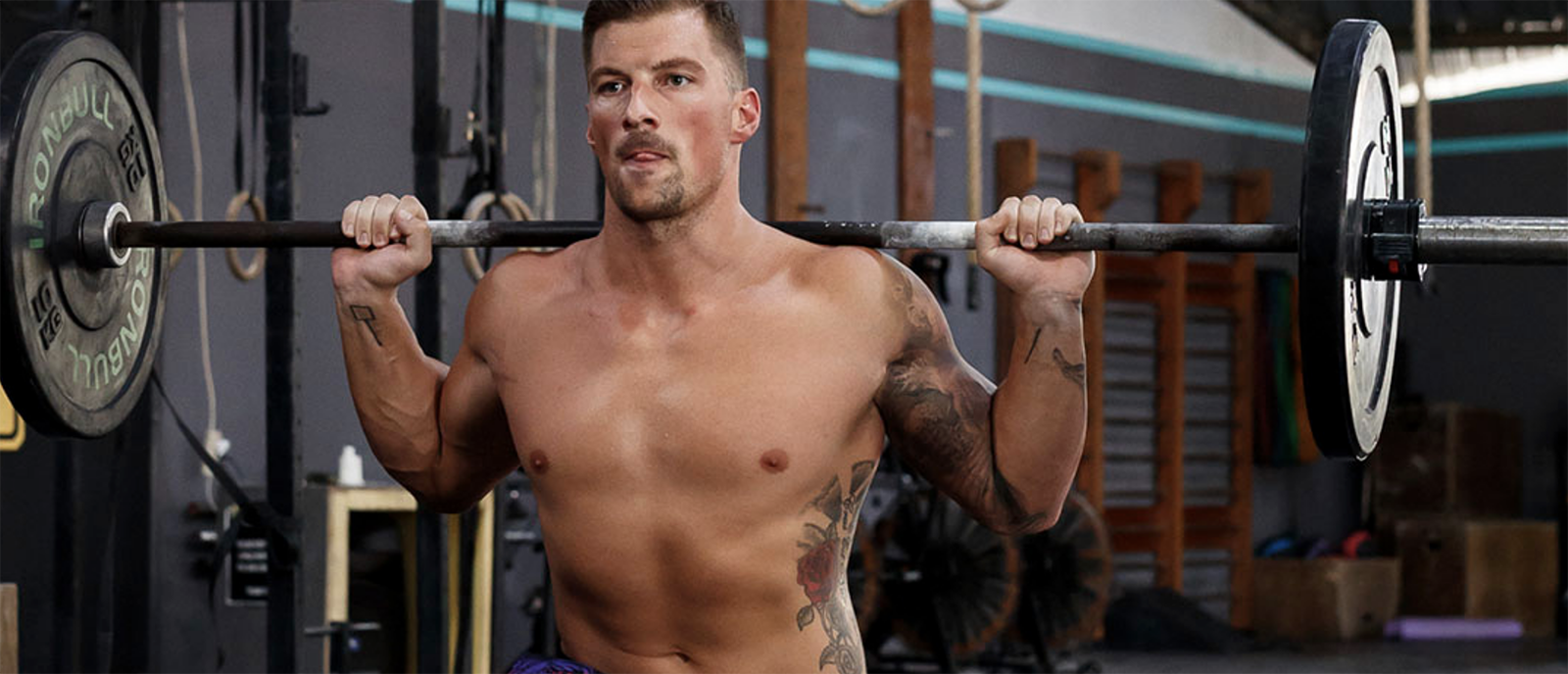The muscle-up is one of the most, if not the most, high-skill gymnastics movements in functional fitness. There are a ton of skills and drills that need developing if you ever hope to find yourself above the rings, feet kicking in jubilation. But that’s not all that needs developing. There’s an ample amount of prerequisite strength required to perform the movement, as well. Here are five things you should be able to do before attempting ring muscle-ups.
5 Things to Master Before You Attempt Muscle-Ups
1. Strict Pull-Ups
The ability to perform strict pull-ups form the foundation of any good muscle-up. No pull-ups, no muscle-up. But everyone knows that, right? We like to see our athletes perform a minimum of five strict pull-ups ups in a row – with a good hollow body position – before even attempting a muscle-up. This ensures the athlete has an adequate amount of musculature to support the extra stress placed on the body from kipping.
Note: If unable to perform strict pull-ups, try incorporating ring rows, bent over rows, and eccentric work into your programming to help bridge the gap.
View this post on Instagram
Remember, too, that this isn’t only about building the foundation so that muscle-ups are easier. It’s also about protecting your body and avoiding injury by building a strong and stable base for more difficult movements.
2. Bar Dips
Bar dips represent the second foundational movement necessary before attempting anything on the rings. In functional fitness, we do most of our pressing overhead (like in a shoulder-to-overhead) or horizontally (like in a push-up or bench press). Rarely do we press downward like we do in a dip. This becomes a necessary skill to practice and get familiar with if you intend to do muscle-ups — not only to finish the movement but also to ensure you have a rock solid receiving position.
Note: If unable to perform bar dips, try incorporating close-grip push-ups and box/bench dips into your programming.
3. Kip Hips to Rings
Building off the foundational pulling strength required to perform muscle-ups, the ability to kip and bring your hips to the rings — again, while maintaining a hollow body — is a necessary skill for muscle-ups. This ensures that the kip is strong enough and that the athlete is elevating their body to the point where they can successfully turn over, rather than just bringing their shoulders or chest to the rings as if they were doing a CTB pull-up on a bar.
Note: It’s important for the athlete to not overextend in their lower back for the sake of making contact with the rings. This is usually a result of the athlete not pulling high enough and “just trying to meet the standard.” It becomes impossible for the athlete to transition over the rings from this overextended position. The rings should make contact with the hips in a hollow body position.
View this post on Instagram
4. Ring Dip Isometric Hold – Top and Bottom
The ability to perform isometric holds at the top and bottom of a ring dip demonstrates control over the rings. It’s always funny to watch athletes jump to the lockout position of a ring dip for the first time and watch the rings violently shake underneath them. The rings, by nature, are dynamic — more dynamic than any other object in functional fitness. This requires all the tiny stabilizing muscles in your shoulder girdle to work extra hard to control the apparatus.
Thankfully, with a little practice, I’ve found athletes can adapt relatively quickly to this movement, but it’s an important movement to practice nonetheless to develop that mind-body connection with the rings.
View this post on Instagram
5. Ring Dips
Finally, ring dips. Simply put, if an athlete cannot perform a rock solid, deep ring dip, they physically won’t be able to finish the muscle-up. The reason I emphasized the word deep is because, more than likely, the first time you turn over on the rings, you’ll find yourself in the deepest ring dip of your life. The ability to have control via isometric holds and strength developed through ring dips will help get you out of the bottom of that impossibly deep dip.
Ready to give it a shot? Here’s Khan Porter with a little more advice.

















